
International Journal of Affective Engineering
Scope & Guideline
Enhancing technology through emotional design principles.
Introduction
Aims and Scopes
- Affective Engineering:
The journal emphasizes research that investigates how emotions can be measured, predicted, and utilized in the design of products, services, and systems to improve user satisfaction and engagement. - Human-Computer Interaction (HCI):
A core area of focus is on improving interactions between humans and machines, exploring how affective computing can enhance user interfaces and user experiences. - Kansei Engineering:
The application of Kansei engineering principles is prevalent, which involves understanding users' emotional responses to products and utilizing this understanding in product design. - Multimodal Sensory Integration:
Research frequently explores how different sensory stimuli (visual, auditory, tactile) interact and affect emotional and cognitive responses, contributing to the design of more immersive experiences. - Psychophysiological Studies:
The journal includes studies that assess physiological responses (e.g., heart rate, EEG) to various stimuli, linking these responses to emotional and cognitive states. - Cultural and Contextual Factors:
There is a consistent focus on how cultural differences influence emotional responses and perceptions, particularly in product design and user experience.
Trending and Emerging
- Interactive and Adaptive Systems:
There is an increasing focus on developing systems that adapt to users' emotional states in real-time, enhancing user engagement and satisfaction through personalized experiences. - Cross-modal Correspondences:
Research exploring how different sensory modalities interact and influence emotional perceptions is gaining traction, highlighting the importance of multimodal design in creating holistic user experiences. - Neurofeedback and Biofeedback Technologies:
Emerging studies are investigating the applications of neurofeedback and biofeedback in affective engineering, aiming to enhance user interaction through physiological monitoring. - Digital and Virtual Environments:
The journal is seeing a surge in studies focused on affective responses within virtual reality (VR) and augmented reality (AR), reflecting the growing relevance of immersive technologies. - AI and Emotion Recognition:
Research on the integration of artificial intelligence in recognizing and responding to human emotions is trending, with implications for user interface design and interactive systems.
Declining or Waning
- Traditional Kansei Applications:
Research specifically focused on traditional Kansei applications in static product design has decreased as the field evolves towards more dynamic and interactive applications. - Physical Product Evaluation:
There is a noticeable reduction in studies that solely evaluate physical products without considering the emotional or affective dimensions, as the focus shifts towards integrated user experiences. - Static User Experience Studies:
The exploration of static user experience evaluations has waned, with a growing preference for studies that incorporate real-time, interactive, and context-aware assessments. - Limited Focus on Non-Digital Contexts:
Research addressing affective engineering in non-digital contexts has diminished, with a trend towards digital and virtual environments, particularly post-pandemic.
Similar Journals

Design Journal
Exploring the Intersection of Creativity and TechnologyDesign Journal, published by Routledge Journals, Taylor & Francis Ltd, serves as a pivotal platform for interdisciplinary research within the expansive fields of Arts and Humanities as well as Computer Graphics and Computer-Aided Design. With an ISSN of 1460-6925 and an E-ISSN of 1756-3062, this journal is dedicated to disseminating innovative ideas and methodologies that shape contemporary design practices. Ranked in the Q2 category in Arts and Humanities and Q3 in Computer Graphics per the 2023 category quartiles, it stands as a reference point for scholars and practitioners alike, fostering a vibrant community for sharing knowledge and fostering creativity. Researchers will find the journal's scope particularly valuable as it covers a diverse range of topics, providing insights critical for advancing knowledge and practice. With the journal continuing to evolve—converging research avenues from 2005 to 2024—it thrives as a beacon of scholarly excellence in the United Kingdom and beyond, appealing to professionals, researchers, and students eager to engage with cutting-edge design discourse.

COGNITIVE AFFECTIVE & BEHAVIORAL NEUROSCIENCE
Unraveling the Mind: Where Cognition Meets Emotion and BehaviorCOGNITIVE AFFECTIVE & BEHAVIORAL NEUROSCIENCE (ISSN: 1530-7026, E-ISSN: 1531-135X) is an esteemed journal published by SPRINGER that aims to advance the understanding of the interplay between cognitive processes, affective states, and behavioral responses in the field of neuroscience. Established in 2001, the journal provides a rigorous platform for disseminating high-quality research, with a significant focus on both Behavioral Neuroscience and Cognitive Neuroscience. Classified in Q1 and Q2 quartiles for 2023, it ranks highly within its categories, holding positions of #37 out of 88 and #46 out of 115 respectively in the Scopus listings. Although not an open-access publication, readers can access a wealth of valuable insights and innovative findings that enrich the scientific community's understanding of brain function and behavior. The journal's emphasis on interdisciplinary research contributes to its esteemed reputation, making it a vital resource for students, researchers, and professionals striving to explore the complex nature of the human mind and behavior.
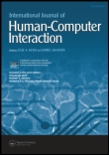
INTERNATIONAL JOURNAL OF HUMAN-COMPUTER INTERACTION
Transforming User Experiences Through ResearchINTERNATIONAL JOURNAL OF HUMAN-COMPUTER INTERACTION, published by Taylor & Francis Inc, stands at the forefront of research within the interdisciplinary fields of human-computer interaction, human factors, and ergonomics. Since its establishment, the journal has consistently contributed to advancing the understanding of the interactions between people and computers, making it a vital resource for researchers, professionals, and students alike. With an impressive impact factor reflecting its high citation rate, this journal is recognized as a Q1 publication in both Computer Science Applications and Human Factors and Ergonomics categories for 2023, showcasing its stature within the academic community. Additionally, it boasts a commendable ranking within the top percentiles in key areas on Scopus, ensuring that the research published here reaches broad scholarly audiences. Available in traditional subscription format, the journal covers seminal studies from 1989 to 2024, reflecting ongoing innovation in technology and its applications in everyday life, and thus serves as an essential platform for pioneering research that shapes the future of user experience.
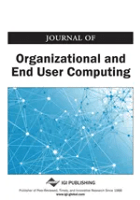
Journal of Organizational and End User Computing
Pioneering Research in User Interfaces and Organizational PracticesThe Journal of Organizational and End User Computing, published by IGI Global, is a leading peer-reviewed outlet dedicated to exploring the intersection of organizational practices and user interfaces within the digital realm. With a robust ISSN of 1546-2234 and an E-ISSN of 1546-5012, the journal has established itself as a crucial resource for scholars and practitioners in the fields of Computer Science Applications, Human-Computer Interaction, and Strategy and Management. Recognized for its quality, the journal attained Q3 status in Computer Science Applications and Human-Computer Interaction, and Q2 status in Strategy and Management in 2023, reflecting its esteemed position in academic rankings. Operating from the heart of the United States, the journal has converged its focus from 2004 to 2024, making it a reliable source for cutting-edge research and industry trends. Although it does not offer open access, the Journal of Organizational and End User Computing remains an invaluable repository of knowledge, perfect for researchers, professionals, and students seeking to advance their understanding of organizational structures and user engagement in computing environments.
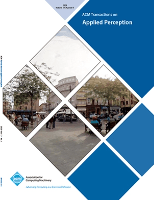
ACM Transactions on Applied Perception
Unveiling the Science of Perception through Computational LensesACM Transactions on Applied Perception is a leading journal published by the Association for Computing Machinery, focusing on the intersection of perception science and computational methods. With an ISSN of 1544-3558 and an E-ISSN of 1544-3965, this esteemed publication has been a vital resource for innovators and researchers since its establishment in 2004. It operates within the ambit of Computer Science and the realms of Experimental and Cognitive Psychology, boasting a commendable impact factor and category rankings, including Q2 in Computer Science (miscellaneous) and Q3 in both Experimental and Cognitive Psychology and Theoretical Computer Science. The journal's scope encompasses a plethora of studies aimed at understanding human perception through computational lenses, making it an essential platform for scholarly exchange. Although it does not currently offer an Open Access option, its extensive reach and rigorous peer-review process ensure high visibility and impact in the academic community. By fostering collaboration across disciplines, ACM Transactions on Applied Perception encourages advancements that bridge perceptual research with practical applications, making it invaluable for researchers, professionals, and students engaged in this dynamic field.
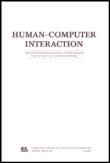
HUMAN-COMPUTER INTERACTION
Unleashing the Potential of Human-Computer InteractionHUMAN-COMPUTER INTERACTION is a premier academic journal published by Taylor & Francis Inc, dedicated to the interdisciplinary field of HCI, which explores the dynamic interactions between humans and computers. With its ISSN 0737-0024 and E-ISSN 1532-7051, the journal maintains a strong presence within the academic community and is recognized for its significant impact, holding a commendable impact factor that underscores its relevance. Ranked in the Q1 category for both Applied Psychology and Human-Computer Interaction, it occupies a critical position in Scopus rankings, listed as #15 in Applied Psychology and #11 in Computer Science, Human-Computer Interaction, placing it in the top 6% of relevant fields. Covering a broad spectrum of topics from usability studies to user experience design, the journal aims to facilitate innovative research and provide insights that bridge theoretical frameworks and practical applications. Published since 1985 and continuously evolving, HUMAN-COMPUTER INTERACTION remains an essential resource for researchers, professionals, and students eager to contribute to and benefit from advances in understanding how technology can effectively serve human needs.
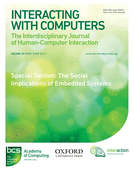
INTERACTING WITH COMPUTERS
Innovating Understanding in Human-Computer EngagementINTERACTING WITH COMPUTERS is a renowned journal published by Oxford University Press, focusing on the interdisciplinary field of Human-Computer Interaction, as well as aspects of Library and Information Sciences and Software. With a rich history of publication since 1989, this journal has established itself as a significant platform for scholars to disseminate cutting-edge research and innovative methodologies that enhance our understanding of how humans engage with technology. Despite being classified in the Q3 and Q2 quartiles across various categories, its 2023 Scopus rankings highlight its relevance, positioning it within the 69th percentile for Library and Information Sciences. This makes it an essential resource for researchers, professionals, and students looking to stay informed about the latest advancements and discussions in this rapidly evolving domain. Though not currently open access, INTERACTING WITH COMPUTERS offers substantial insights that are crucial for driving forward the conversation in Human-Computer Interaction, ensuring its relevance in both academic and applied contexts.

IEEE Open Journal of the Computer Society
Empowering Research Through Open AccessIEEE Open Journal of the Computer Society is an esteemed open-access journal dedicated to advancing the field of computer science. Published by IEEE-INST ELECTRICAL ELECTRONICS ENGINEERS INC since 2020, this journal promotes innovative research and scholarly communication in a rapidly evolving technological landscape. With a notable Q1 ranking in the Computer Science (miscellaneous) category and a high Scopus percentile of 92, it serves as a premier platform for disseminating cutting-edge findings and interdisciplinary studies. The journal is committed to facilitating unrestricted access to valuable insights, fostering collaboration among researchers, professionals, and students alike. As it continues to publish impactful articles through 2024 and beyond, the IEEE Open Journal of the Computer Society remains a vital resource for anyone interested in the latest trends and developments in computer science.

Journal on Multimodal User Interfaces
Connecting Minds in Human-Computer InteractionJournal on Multimodal User Interfaces, published by Springer, serves as a vital platform for scholarly exchange in the rapidly evolving fields of Human-Computer Interaction and Signal Processing. Established in 2008 and continuing through 2024, this journal maintains a high profile in academia, currently ranking in the Q2 category for both fields, indicating its significant contribution to ongoing research and practical applications. With its Scopus rankings placing it at #34 in Signal Processing and #49 in Human-Computer Interaction, it is recognized for publishing high-quality, impactful research. Although it is not an Open Access journal, the Journal on Multimodal User Interfaces remains accessible through institutional subscriptions. Researchers, professionals, and students will find the journal an essential resource for advancing knowledge and fostering collaboration in multimodal interaction technologies, which are crucial for enhancing user experience and developing intelligent systems.
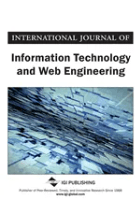
International Journal of Information Technology and Web Engineering
Transforming Ideas into Digital SolutionsInternational Journal of Information Technology and Web Engineering, published by IGI GLOBAL, is a pivotal platform for the dissemination of cutting-edge research in the fields of information technology and web engineering. With its ISSN 1554-1045 and E-ISSN 1554-1053, this journal has been effectively contributing to the academic landscape since its inception in 2006, aiming to bridge theoretical frameworks and practical applications in an increasingly digital world. As a recognized Q3 journal in the realm of Computer Science (miscellaneous), it ranks 122 out of 232 in Scopus' classification, positioning it amidst the active discussions and developments within the IT and web engineering communities. The journal not only serves as an invaluable resource for researchers and educators but also encourages students and practitioners to explore innovative methodologies and technologies that shape the future of the digital landscape. Although it is not currently an open-access journal, its contributions are indispensable for advancing knowledge and fostering collaboration within the global research community.